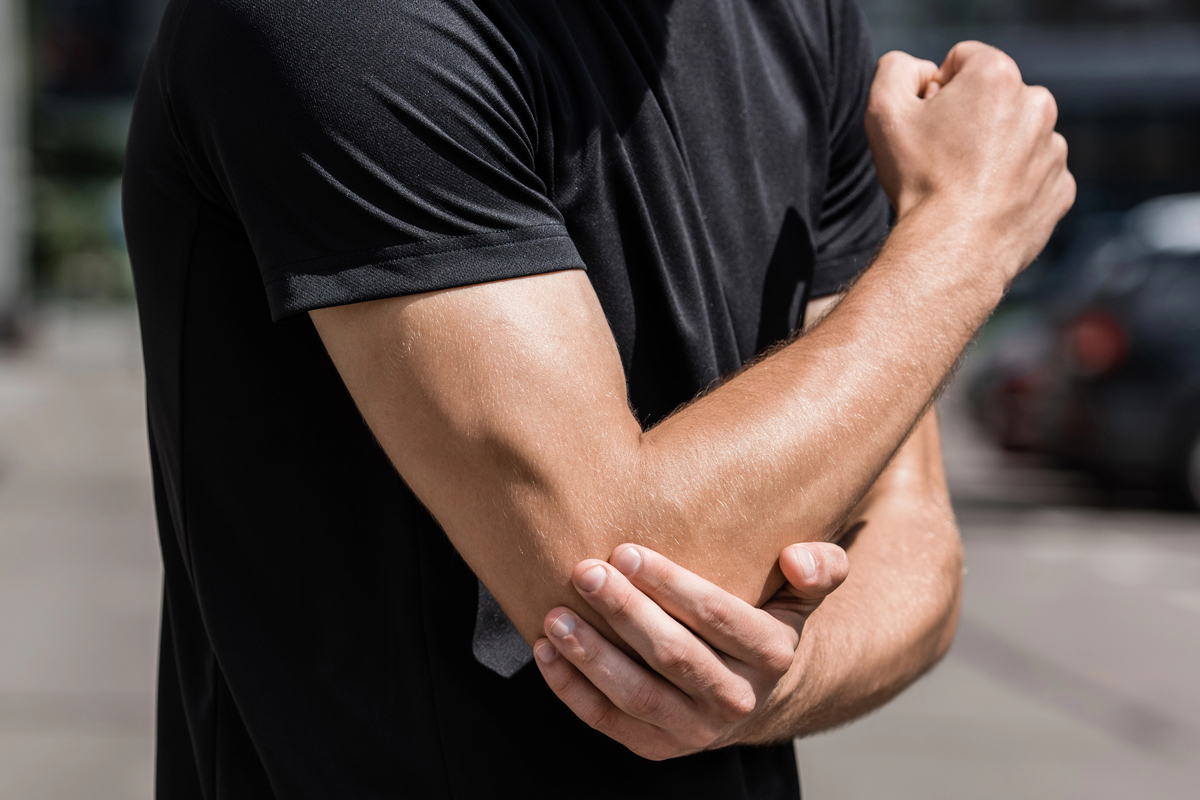
Lateral epicondylitis or Tennis Elbow as it’s more commonly known, is a very common injury for those who partake in repetitive gripping and wrist extension sports. Such as tennis (hence the nickname), squash, badminton and other racket sports. With up to 3% of the adult population being affected each year.
Common Causes & Symptoms
Tennis elbow is often caused by overuse, from repetitive movements involving loaded and repeated gripping and or wrist extension, the condition is often brought on due to poor mechanics/technique, or improper equipment that does not suit the athlete.
The condition itself is a degenerative overuse of the ECRB (extensor carpi radialis brevis), a muscle in the posterior section of your forearm. The muscle connects at the lateral epicondyle of the humerus (where people feel the pain in their elbow) and inserts into the base of the third metacarpal bone on the back of the hand (middle finger). People with tennis elbow often experience micro ruptures in the common extensor tendon (located on the lateral side of the elbow), and small tears in the tendons that extend to the wrist. This leads to irritation and flare ups when performing certain movements and engaging grip strength.
Common symptoms seen with tennis elbow usually include the following:
- Pain – tends to be most prominent on the lateral side of the elbow, ranging from from mild irritation to debilitating pain, depending on the severity of the injury.
- Tenderness – the areas around the lateral epicondyle will become very tender and sore to touch when inflamed.
- Aggravating factors – pain is typically worse in activities which require holding objects, and engaging hand or grip strength. such as racket sports.
- Grip weakness – people who suffer with tennis elbow may experience weakness within their grip, with fatigue setting in a lot faster than normal.
Treatment & Rehabilitation
Any type of tendon overuse injury requires a reduction in any aggravating factors, to allow the tendon to not be strained and give it a chance to recover. A tendon based rehabilitation programme should be focused on strengthening the forearm through initial isometric exercises in the painful movement patterns, for example towel twists, or gripping exercises. With rehab progressing to a more heavy eccentric based approach to the common extensor tendon.
This can then be aided with the reintroduction of certain movements that triggered the original injury. However, this needs to be a very gradual process, and completed alongside reviewing technique which may help to take stress off the tendons. By slowly reintroducing stress onto the tendons it allows them to adapt to the demands.
Differential Diagnosis
A lot of conditions present with similar symptoms as lateral epicondylitis, which can make it tricky to diagnose in some cases. These include:
- Elbow bursitis
- Cervical radiculopathy
- Radial nerve entrapment
- Radial tunnel syndrome
- And even bone spurs
If you are suffering with tennis elbow like symptoms, we would be happy to provide an assessment for you – please book an initial consultation using the button below.

